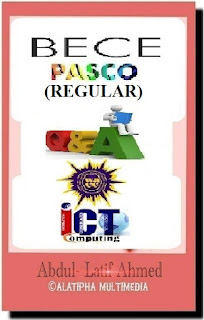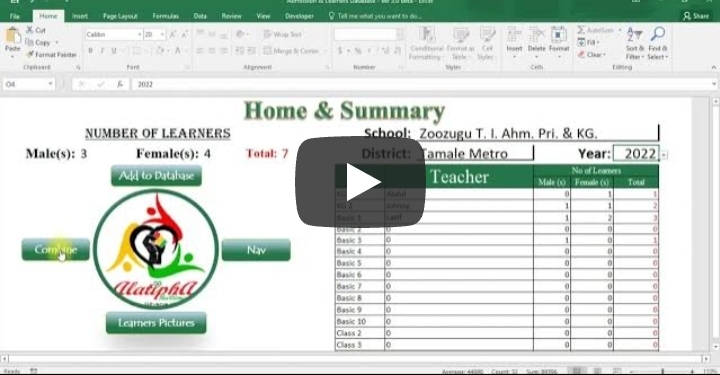Chapter 3: Goals and Objectives
Chapter 3: Goals and Objectives
Chapter Overview
Chapters 1 and 2 introduced some important teaching behaviours expected of you and some individual differences among your students you can expect to see in your classroom. This chapter and the next show you how to plan and organize who, what, and how you will teach in ways that reach all of your students, whatever their differences may be. First, let's consider the distinction among standards, goals, and objectives and how they can help you reach all of your students.
This chapter introduced you to instructional objectives. Its key terms and main points were:
Standards, Goals, and Objectives
Standards are expressions of societal values that provide a sense of direction broad enough to be accepted by large numbers of individuals.
Goals are expressions of societal values that provide a sense of direction broad enough to be accepted by large numbers of individuals.
Standards identify what will be learned from your instruction and energize and motivate you and your learners to achieve practical end products; and behavioural objectives refer to objectives that can be observed and measured.
Goals identify what will be learned from your instruction and energize and motivate you and your learners to achieve practical end products.
Objectives have two purposes:
- to tie standards to specific classroom strategies that will achieve those standards, and
- to express teaching strategies in a format that allows you to measure their effects on your learners.
When the word behavioural precedes the word objective, the learning is being defined as a change in observable behaviour that can be measured within a specified period of time.
Tyler's Goal Development Approach
The need for behavioural objectives stems from a natural preoccupation with concerns for self and task, sometimes to the exclusion of concerns for the impact on students.
Tyler’s Goal Development Approach outlines factors such as:
- subject matter;
- societal concerns;
- student needs, interests, and the abilities and knowledge they bring to school; and
- instructional theory and research that can be used in the classroom.
An Overview of Behavioural Objectives
Simply put, behavioural objectives do the following:
- Focus instruction on a specific goal whose outcomes can be observed.
- Identify the conditions under which learning can be expected to occur.
- Specify the level or amount of behaviour that can be expected from the instruction under the conditions specified.
Action verbs help operationalize the learning outcome expected from an objective and identify exactly what the learner must do to achieve the outcome.
The outcome specified in a behavioural objective should be expressed as an end (e.g., to identify, recall, list) and not as a means (e.g., to study, watch, listen).
If the observable learning outcome is to take place with particular materials, equipment, tools, or other resources, these conditions must be stated explicitly in the objective.
Identifying the Conditions
Conditional statements within a behavioural objective can be singular (one condition) or multiple (more than one condition).
Conditions should match those under which the behaviour will be performed in the real world.
Stating Criterion Levels
A proficiency level is the minimum degree of performance that will satisfy you that the objective has been met.
Proficiency levels represent value judgments, or educated guesses, as to what level of performance will be required for adequately performing the behaviour in some later setting beyond your classroom.
The expressiveness of an objective refers to the amount of flexibility allowed in a response. Less expressive objectives may call for only a single right answer, whereas more expressive objectives allow for less structured and more flexible responses. The expressiveness allowed is always a matter of degree.
The Cognitive, Affective, and Psychomotor Domains
"Complexity" of a behaviour in the cognitive, affective, or psychomotor domain pertains to the operations required of the student to produce the behaviour, not to the complexity of the teaching activities required.
Behaviours in the cognitive domain, from least to most complex, are knowledge, comprehension, application, analysis, synthesis, and evaluation.
Behaviours in the affective domain, from least to most complex, are receiving, responding, valuing, organization, and characterization.
Behaviours in the psychomotor domain, from least to most complex, are imitation, manipulation, precision, articulation, and naturalization.
The Cultural Roots of Objectives
Behavioural objectives have their roots in the educational values we espouse as a nation. Texts, curricula, and department and school policies are interpretations of these values shared at the broadest national level and translated into practice through behavioural objectives.
Some Misunderstandings About Behavioural Objectives
Four important cautions in using the taxonomies of behavioural objectives are as follows:
- No behaviour specified is necessarily more or less desirable than any other.
- Higher cognitive skills often are more authentic than lower cognitive skills.
- Less complex behaviours are not necessarily easier to teach, less time consuming, or dependent on fewer resources than are more complex behaviours.
- Behaviour in one domain may require achievement of one or more behaviours in other domains.
Multiple Choice Questions
Instructions
Click on 'Details' below to begin the test
2. Several educational groups and associations have stated that schools should develop instruction that is focused on.....
3. Based on the goals they have established for students, reports from educational.....
4. To qualify as a behavioural objective, the behaviour being addressed must be.....
5. Which is not involved in writing a behavioural objective?
6. Which of the following is the most appropriate word to use in a behavioural objective?
7. "The student will assess the proposition presented by today's speaker of a plan that uses knowledge of the causes of the Revolutionary War for solving one of the social problems of today." This statement represents which level of cognitive performance?
8. Which of the following expressions is used to describe the objectives at the naturalization level of the psychomotor domain?
9. Which of the following expressions best describe the objectives at the organization level of the affective domain?
True/False
Instructions
Click on 'Details' below to begin the test
2. Reports from educational groups have called for an increase in the number of school hours as well as a higher standard in grading.
3. Unobserved activities, such as mental creations or activities occurring only in the learner's mind, constitutes evidence that learning has occurred.
4. "Given five quadratic equations, the students will be able to solve the equations correctly in 80% of the cases." This statement is an example of a behavioural objective.
5. Criterion level is used interchangeably with level of proficiency.
6. Audience, conditions, and criterion level are the three essential components of a behavioural objective.
7. Authentic tests ask learners to display their skills in a situation similar to a real-world setting.
8. Many lower-order behaviours must be learned before higher-order behaviours can be attempted.
9. The cognitive, affective, and psychomotor domains are mutually exclusive, that is behaviours listed in one domain are not needed to attain those listed in other domains.
10. Objectives may contain behaviours from one, two, or all three of the domains.
11. All objectives require a single correct response.
12. Generally, those behavioural objectives requiring higher level cognitive, affective, and psychomotors skill will be more authentic.
13. Behaviours of less complexity are always easier to teach than those at higher levels.
14. The purpose of the content-by-behaviour blueprint is to help teachers discover behaviours they may have failed to include in their lesson plans.
15. A good reason for stating the level of performance in a behavioural objective is to provide some way to determine whether the behaviour has been obtained.
16. An authentic objective is one which reflects behaviours most like those needed for living in the “real” world.






.png)



























Comments
Post a Comment